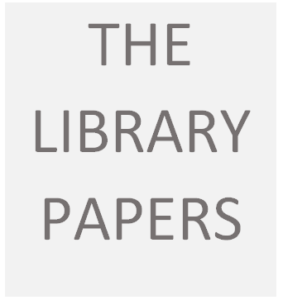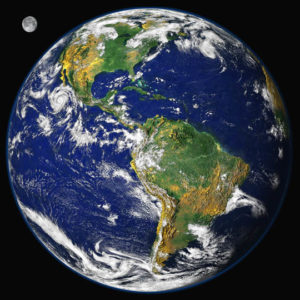Assignment 2 Themed Bibliography
A Sense of Place
In the end, we conserve only what we love.
We love only what we understand.
We understand only what we are taught.
Babr Dioum Dioum, Senegalese Poet
Level: Grades 2-3
Subject: Language Arts, Social Studies, Science
Big Idea: During read alouds, students listen to and interact with a selection of books that help them develop their sense of personal, social and historical place, and extend their interactions with the book to actions in the world.
Rationale:
Two ideas were my starting point for this collection: the quote from Babr Dioum Dioum above about how we only conserve what we have learned to love, and the constructivist idea that robust literacy development requires that children build a feed-back loop of connections and associations between the ‘real’ world and things they’ve learned from books. It seems to me that both purposes can be accomplished by helping them develop and explore a sense of place—their personal place in the world, in their society, and in history.
As children respond to these texts, the ideas in them will be actualized not only by their personal imaginative recreations and their shared social interactions during the read aloud, but in extension activities like going for walks and field trips, observing, drawing, and writing about their experiences with their place.
Ideally I envision this themed unit as being a collaborative project between the classroom teacher and the teacher/librarian. While the selection I have presented here dove-tails nicely with activities in primary classrooms, like calendar time, language arts, science, environmental study, math and art, these books are only suggestions for ways to integrate the topic into the classroom instruction. They are always open to amendment. If not for the limit of 15 books, there are certainly many more that could have been included. I had to make tough choices on what to include, what to leave out. Eventually I made my selection on the basis of the multi-modal properties of each book, and the way they lend themselves to other activities.
This is the starting place for my own personal canon of children’s books, based on my own profound agreement with Babr Dioum Dioum that we conserve what we have learned to love, on my concern that all too often the role of books in children’s lives is abstract rather than concrete, and my conviction that alongside our efforts to engage children in the natural environment, there is a powerful role for stories about our place and how we fit here.
My Personal Sense of Place
The books in this section are intended to create mindfulness when we interact with our environment. I chose these books because they tell of ways of being engaged with nature that most children can access in their immediate environment and on their own, and between them they invite diverse ways of responding.
The Places I Share With My Community
In this section, I have defined community as inclusively as possible, which includes all humans, of course, but which also includes non-human members.
The Place I Share With People From the Past
Originally I had thought this section would include natural and social historical accounts of the environment and the lives of children in Burnaby from a century ago, both newcomers and first nations. But after checking with the Burnaby Museum and Archives, the Burnaby Village Museum, the Metro Vancouver First Nations page, and the Burnaby Public Library, I was unable to find anything like a children’s picture book on this topic. I did find one book about children in Vancouver a century ago, a fantasy about children who travelled back from 1986 (Vancouver’s Centennial year, when the book was written), which I have included here as a placeholder until I can find books specifically about Burnaby.
Works Cited (click here)
Bunting, Eve, and Ted Rand. Secret Place. New York, Clarion Books, 1997.
Burton, Virginia Lee, and Lorraine Lee. Hammond. The Little House. Boston, Houghton Mifflin Co., 2001.
Campbell, Nicola I., and Kim LaFave. Shi-Shi-Etko. Toronto, House of Anansi Press, 2011.
Fanelli, Sara. My Map Book. New York, HarperCollins Publishers, 1995.
Fleming, Virginia M., and Floyd Cooper. Be Good to Eddie Lee. New York, Putnam & Grosset Group, 1997.
Florian, Douglas. Nature Walk. New York, Greenwillow Books, 1989.
Garland, Sherry, and Tatsuro Kiuchi. The Lotus Seed. Singapore, Harcourt, 1997.
Gee, James Paul. What Video Games Have to Teach Us About Learning and Literacy. SecondEdition: Revised and Updated Edition.
Gerstein, Mordicai. The First Drawing. New York, Little, Brown and Company, 2013.
Hartman, Gail, and Harvey Stevenson. As the Crow Flies: a First Book of Maps. New York, NY, Aladdin Paperbacks, 2002.
Kriesberg, Daniel A., and Dorothy Frederick. Sense of Place: Teaching Children About the Environment With Picture Books. Teacher Ideas Press, 1999.
LoMonaco, Palmyra, and Normand Chartier. Night Letters. New York, Dutton Children’s Books, 1996.
McCloskey, Robert, and Brian Hatch. Make Way for Ducklings. New York, Viking Press, 2016.
Parnall, Peter. Quiet. New York, Morrow Junior Books, 1989.
Stafford, Terry. Matt & Jenny in Old Vancouver. Fort Langley, B.C., Children’s Studio Books, 1986.
Wiesner, David. Tuesday. New York, Clarion Books/Houghton Mifflin Co., 1997.
Willems, Mo, and Jon J. Muth. City Dog, Country Frog. New York, Hyperion Books for Children, 2010.



